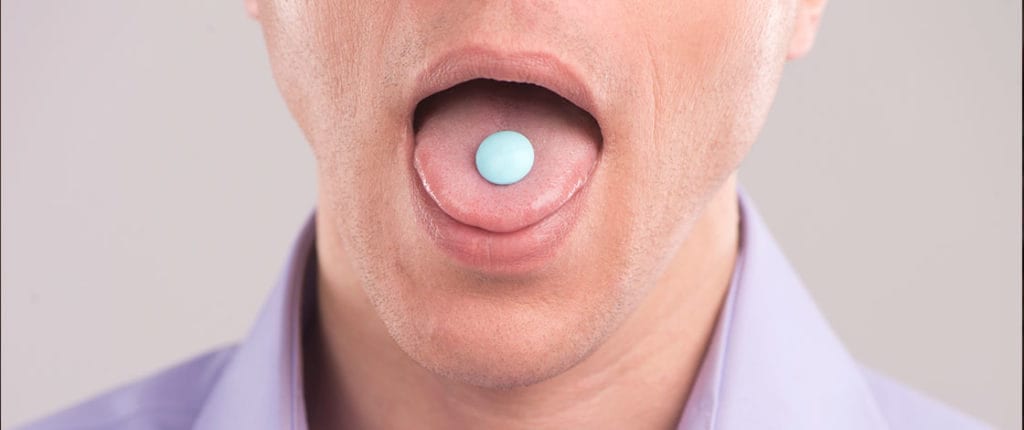The 2012 “Monitoring the Future” study, which looks at the rates of drug use, ease of availability, and perceived risk amongst teens, revealed that the vast majority of teens who abuse prescription medicines get them for free from friends and family. Although the overall use of the drugs has decreased, their use is still at unacceptably high levels amongst teens. Understanding how they gain access to the drugs is an important step toward significantly reducing teen prescription drug abuse. There are also some simple steps parents can take to reduce the likelihood of their children getting access to addictive prescription medicines.
Commonly Abused Prescription Medicines
Several different varieties of prescription medicines have the potential for abuse. It could be argued that doctors over-prescribe potentially damaging substances, but the fact that they have legitimate uses means they will always be in circulation somewhere. The most commonly abused types of prescription medicines are opioid painkillers, depressants, and stimulants. Opioid painkillers include things like hydrocodone (Vicodin), oxycodone (Percocet) and codeine, which induce relaxation and euphoria at high doses. Depressants are usually in the barbiturate and benzodiazepine families, including drugs like diazepam (Valium), alprazolam (Xanax), and mephobarbital (Mebaral), and produce sedative effects. Stimulants are basically the opposite – improving focus, boosting alertness and often causing insomnia – and include medicines like dextroamphetamine (Adderall) and methylphenidate (Ritalin). Some users of these drugs without a prescription do so for the legitimate reason the medicine was taken. For example, somebody with anxiety problems may take benzodiazepines to relax, or somebody in extreme pain could use opioids without a prescription without technically “abusing” them. However, in these cases they could simply visit a doctor for a prescription, so the vast majority of un-prescribed use is purely for recreation. This means that extremely large doses are common; an addiction is often a consequence of the repeated exposure.
The Monitoring the Future Study
The “Monitoring the Future” study is an annual survey given to teens in high school grades 8, 10 and 12, largely questioning them on their use of various types of drugs and how easily they could gain access to them. One of the questions relates to “any prescription medicine,” but this is only asked to 12th graders. Generally speaking, this is the group at the greatest risk of having used prescription medicines, and this is confirmed by the questions relating to specific drugs (some of which are asked to all three grades). For example, in 2011, 8.1 percent of 12th graders reported having used Vicodin within the previous year, compared to 5.9 percent of tenth graders and 2.1 percent of 8th graders. In 2011, 15.2 percent of 12th graders had used medicines without a doctor’s prescription within the past year. The 2012 results show that this figure has fallen slightly, but still sits just below 15 percent. This is a surprisingly large proportion, and the researchers added questions about how they were gaining access to the medicines. Generally speaking, the results indicate that between 2007 and 2012, regardless of the specific drug, most 12th graders who took prescription medicines received them for free from friends or relatives. The respondents were given a variety of options and could select as many as were applicable for their use in the previous year. Consistently few 12th graders obtained the medicines from online pharmacies, and the proportion who stole them from friends or family was also relatively small. For example, from 2009 to 2012, only 17.9 percent had stolen narcotic medicines (such as opioids) from a family member. Medications were more likely to be given to the individual for free or sold them by their friends, but some relatives did give their children drugs. Of the participants, 20.5 percent had received tranquilizers for free from their relatives, 15.6 percent for narcotic medicines and 9.2 percent for amphetamines. The corresponding figures for friends are all in excess of 50 percent, but the number of relatives providing free, addictive drugs to teens is shocking.
What Steps Can Parents Take?
If you’re concerned that your teen or child may gain access to prescription medicines, there are a few things you can do to make it less likely. Firstly, never give prescription medicine intended for you to your teen. If they need treatment, take them to a doctor and see what he or she suggests – do not take it into your own hands. It’s also important to not give off the wrong impression if you have to use medicines with a potential for abuse – take the medicine as medicine, not a casual pick-me-up. Although it’s not the most common method of getting hold of medicines, locking your prescriptions away is a wise precaution. Leaving them in unlocked cabinets makes it all too easy for teens to experiment. If you can’t lock them up for some reason, find somewhere to hide any with the potential for abuse. In the worst case scenario, keep count of your pills to ensure you know if any go missing. According to the data, teens are most likely to get drugs for free from their friends, and unfortunately you can’t have total control over this. Watch out for any unusual behavior (for example, a sharp dip in grades, long sedentary periods, and more frequent mood-swings or agitation) and talk to them if you have cause for concern. If he or she has got involved with a new friend or group, ask about them and follow-up anything you don’t like the sound of. You probably won’t find anything out this way (“what’s with the third degree?”), but if you do it’s time for a serious talk. Explain to them that all medicines have side effects and that prescription medicines can be harmful and addictive. You need to be there for them, but don’t be afraid to get professional help if there is a real problem. Other Sources: //www.myhealthnewsdaily.com/2246-prescription-drug-addiction-growing-teens.html //americannewsreport.com/teen-abuse-of-prescription-drugs-on-the-rise-8816971 //teens.drugabuse.gov/facts/facts_rx1.php //www.drugabuse.gov/related-topics/trends-statistics/monitoring-future/monitoring-future-survey-overview-findings-2012

